Adjusting Camera Parameters | |||||
|
| ||||
Select the camera in the specification tree then right-click and select Properties.
The Properties dialog box is displayed:
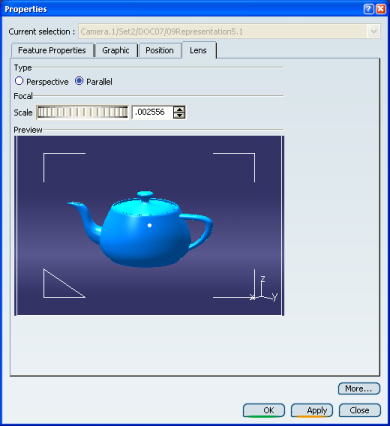
In the Lens tab, select the lens type: Perspective or Parallel, i.e. to obtain a conical or a cylindrical projection. The Preview area shows the result of your selection accordingly.
-
A conical camera is equivalent to a standard camera, with a non-zero focal length. Parallel lines in the camera line of view appear to intersect at the same point. Perspective cameras are used in most cases since they are close to the human vision.
-
In the case of a cylindrical camera, parallel lines never appear as intersecting. These cameras are mainly used to define architectural viewpoints.
-
Specify the Focal Length, which determines the field of view, in millimeters. The focal length is the distance between the camera origin and the viewing plane.
In a cylindrical projection, the focal length is replaced by a zoom factor which determines the scale of view (i.e. Scale appears instead of Focal Length in the dialog box).
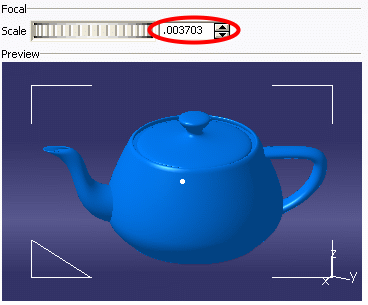
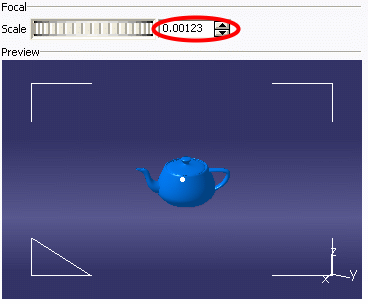
You can also specify the camera view directly inside the preview window by zooming, rotating or panning the view:
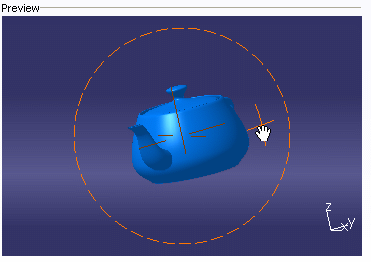
Click the Position tab to define the target and origin position.
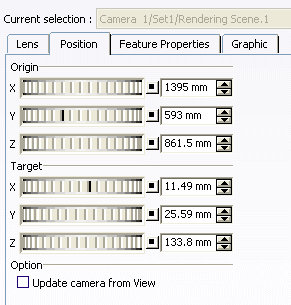
You can define the Origin and the Target position in millimeters along the X, Y and Z axes.
If you are not satisfied with the values you defined, you can click Reset value
 next to the desired parameter to reset its value.
next to the desired parameter to reset its value.Important: - Snapping the robot to the camera lets you modify
the camera position and orientation very easily
simply by dragging the arcs of the robot as shown
below:
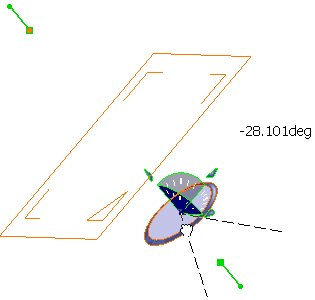
- For detailed information about robot manipulation, refer to "Moving Objects Using the Robot" in the Version 5- Infrastructure User's Guide.
- Snapping the robot to the camera lets you modify
the camera position and orientation very easily
simply by dragging the arcs of the robot as shown
below:
Select the Update camera from View check box to adjust (i.e. center) automatically the camera whenever the viewpoint is modified:
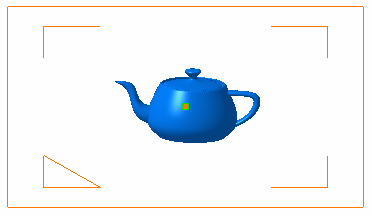
This avoids using the Update from View contextual command each time a viewpoint modification is done.Click OK when finished.